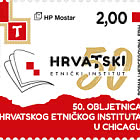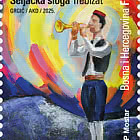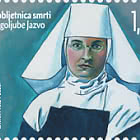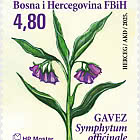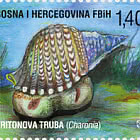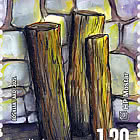MOSTAR, the political, economic and cultural centre of the Croatian community of Herceg – Bosna. Lies at the foot of the Velež, Hum and Čabulja mountains in the Neretva valley. It was first mentioned in 1452 as castelli de ponte, referring to what must have been a wooden suspension chain – bridge. The castels, or towers, at either end of the bridge were guarded by mostars ( in Croatian meaning bridge guards), hence its name of Mostar. The town began to thrive in the fifteenth century, but in the second half of the century it fell to the Turks and became a Turkish garrison town, it was important in the sixteenth century in the wars against the Venetian Republic, Mostar became an administrative and municipal district, and a provincial seat, a khadiluk, in 1519, In it lived the leading civilian, military and ecclesiastical officials of the region. In 1875 the Hercegovians began an uprising against the Turks that culminated in Austria occupation.
The city architecture still bears traces of the Imperial and Royal Monarchy, (Rondo Square, the High School, the Neretva Hotel, the Municipal Baths). During the first and second world wars, together representing 9 years of fighting, Mostar was spared. But in the two months barbaric Serbian and Montenegrin shelling of April and May 1992 it suffered great destruction before the enemy forces were defeated by the soldiers of the Croatian Defence council. More than a hundred listed buildings were seriously damaged (churches and mosques), as were almost all the bridges across the Neretva and countless residential and business premise. Now, March 1993, the town is still under heavy firing from the Serbian and Montenegrin militia.
The beautiful old stone bridge, with its half – moon shape, is so well known that it is almost the emblem of the city. It was built by Hajredin the younger, pupil of Sinan, in 1556. It is 28.70 m long, 4.49 wide and in summertime is 20 m above the water. It took nine years to complete this single-span arch of dressed stone blocks joined by iron clamps se in molten led, was built by Croatian craftsmen from Dubrovnik and Popovo. (R. Dodig)









